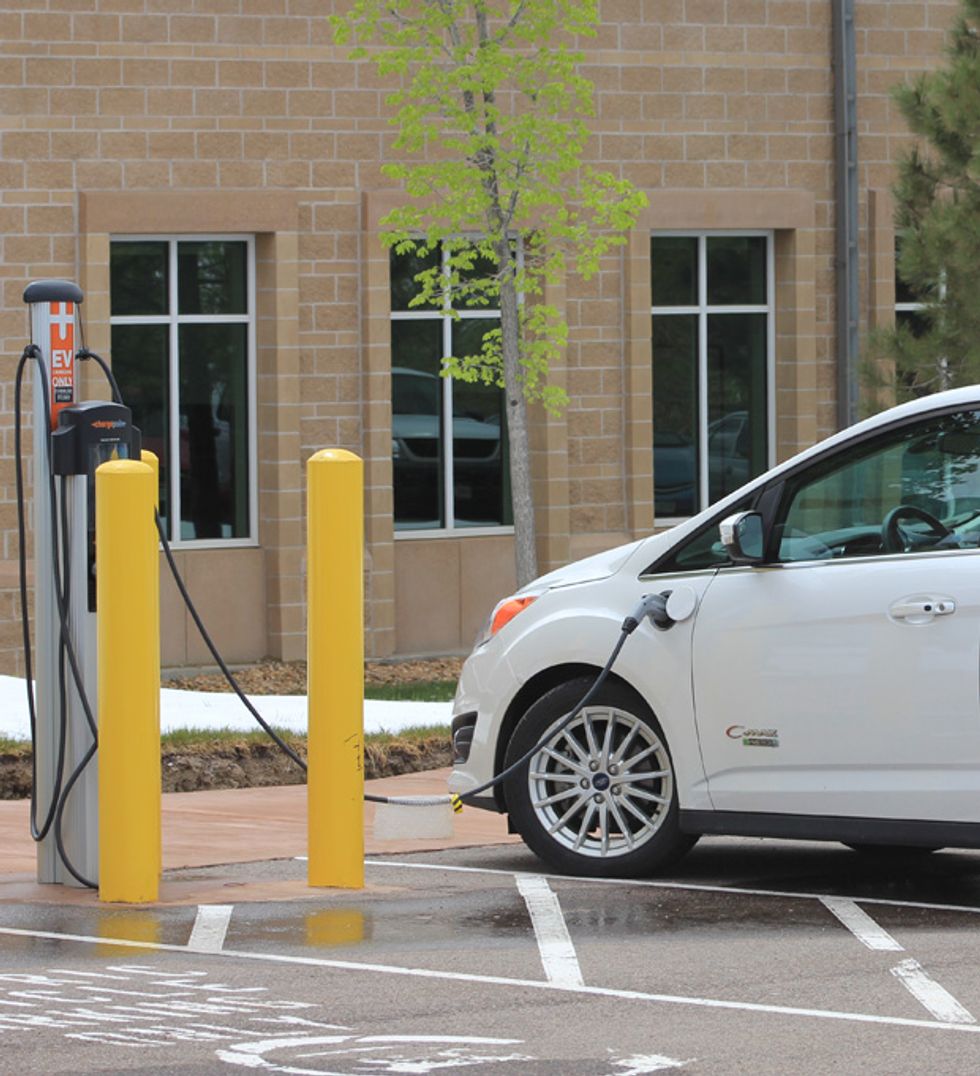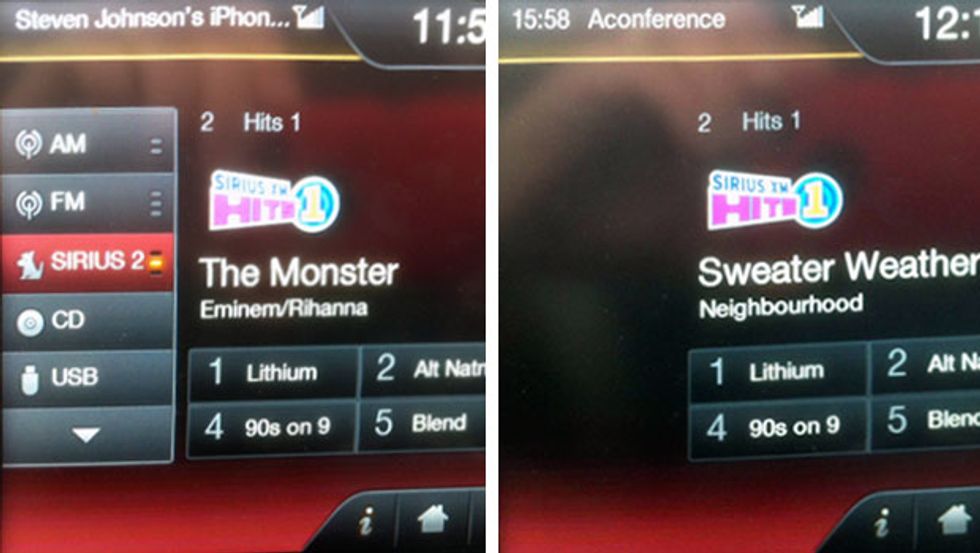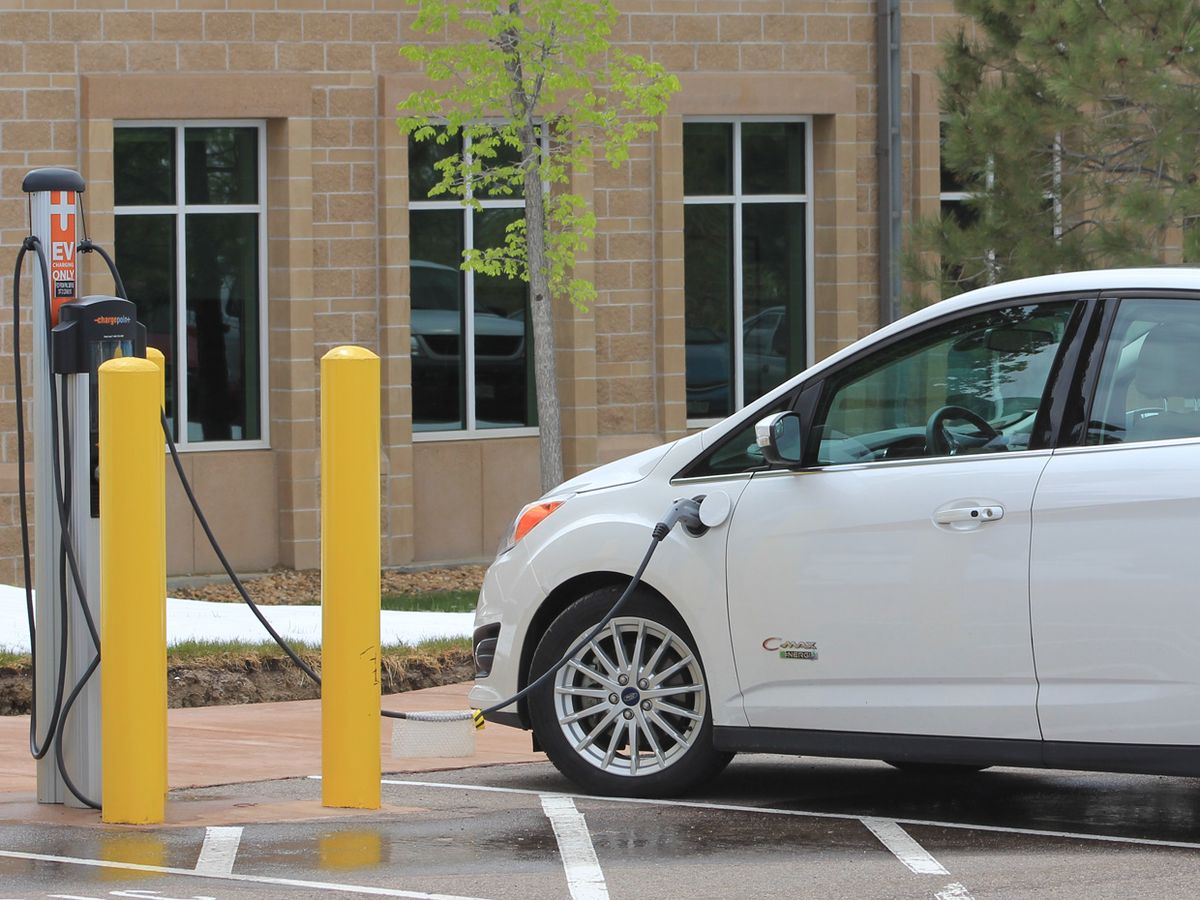
The idea of a plug-in hybrid car is appealing to many of us. Its electric motor and batteries promise a greener driving experience, while its internal combustion engine extends the vehicle’s range well beyond that of an all-electric car. But what about the reality of owning a plug-in hybrid? I got to find out for myself when, in November 2012, I bought a Ford C-Max Energi.
I had several reasons for doing so. First and foremost was to use up the net-metering credits I was getting from the rooftop solar photovoltaics that I installed on my house in Boulder, Colo., which I wrote about for IEEE Spectrum in August 2010. After that article was published, I made a few energy-efficient improvements, based on a home energy audit by my electric company, Xcel Energy. The auditor suggested sealing the windows and doors as well as installing low-emissivity glass in 11 west-facing windows to reduce the house’s solar gain during the summer.
I had been watching the development of electric cars, and I nearly jumped at the all-electric Nissan Leaf. But after considering its electric range of 135 kilometers (84 miles), I realized that it and other all-electric cars would be impractical for long-distance road trips.
I then researched plug-in hybrid electric vehicles (PHEVs). The internal combustion engine plus electric motor and batteries meant they would have no range issues. I seriously considered the Chevy Volt, but it seemed too small—it seated only four and had a tiny 0.3-cubic-meter (10.6 cubic-foot) trunk—and also too pricey, even with the state and federal rebates on electric vehicles. The plug-in Toyota Prius had an electric range of only 18 km (11 miles), too short for my wife’s typical round-trip commute.
Then I heard about the Ford C-Max Energi plug-in hybrid. Ford’s first offering in this category, it’s based on an already popular European model, and so it looks and feels a bit more traditional than, say, the Volt. The Energi’s 2.0-liter internal combustion engine is also bigger than the Volt’s 1.4-liter internal combustion engine, and it drives a conventional transmission. Its lithium-ion batteries can be charged from a regular 120-volt household plug or a 240-V, level 2 charging station, and they give the car an all-electric range of around 34 km (21 miles), according to Ford. There’s 0.54 cubic meters (19.2 cubic feet) of cargo space, and the car seats five. Compared to the Volt, this car sounded more practical as a family hauler.
What made the choice hard was that I really did not need a new car. At the time, we were driving a 2005 Nissan Altima with only about 120,000 km (75,000 miles) on it, and we were averaging 8.88 liters per 100 kilometers (26.5 miles per gallon). Frankly, it seemed pretty stupid to sell a perfectly good car just to buy a plug-in hybrid.
Well, call me stupid, but I couldn’t let the idea go. I decided to go see a C-Max Energi for myself. I knew that the car had been an instant hit when it came on the U.S. market in early 2012, and so I was concerned that I’d have no leverage if I went to just any dealership. What if the dealer tacked on a “dealer availability” charge of several thousand dollars? Fortunately, the U.S. warehouse club Costco offers some attractive options for purchasing cars at a discount, so I checked there first. Through the Costco purchasing plan, I could get a few thousand off the car and buy it at “invoice.” Costco suggested a Ford dealer in West Denver.
I visited on a Saturday morning. They didn’t yet have a C-Max Energi, but they did have a C-Max Hybrid, which is similar except for the plug. Ford had done a good job of training its sales folks, who were all very knowledgeable about nearly every feature of the Energi. They told me it would take about 7 kWh to fully charge the batteries—2 hours at 240 V or 7 hours with the supplied 120-V charger. With electricity prices in Colorado of about $0.11/kWh, it would cost US $0.77 per day to charge the car.
Just as we were checking prices on the computer, the first C-Max Energi became available for shipment to Colorado. The salesman turned to me and asked: Do you want it? He said he already had a waiting list of customers who were ready to buy one, but since I was sitting right in front of him, he offered it to me first. Needless to say, I was not expecting things to come together this quickly. I immediately called my wife to see if I would still have a place to sleep that night if I put a deposit down on a new car. Fortunately, she said yes—she’s very understanding that way. I handed over a $1,000 deposit and figured if I later decided not to get the car, I could still get my money back.
Back home that evening, I started thinking of every conceivable justification for purchasing a new PHEV. I started with the obvious: fuel savings. Ford rates the 2013 C-Max Energi running on batteries at the energy equivalent of 2.35 L/100 km (100 mpge). That’s your fuel economy for the first 34 km (21 miles) or so. In a perfect world, you would keep all your trips to less than that, which would then run you about $0.023 per kilometer (assuming $0.11 per kilowatt-hour and 7 kWh per charge). (Ford recently lowered its efficiency rating for the 2013 C-Max Energi to 88 mpge and the EV range to 19 miles. The company informed me that I’ll be receiving a “goodwill payment” of $750 for its error.)
Once the regular gasoline engine turns on, the Energi’s highway rating, according to the U.S. Environmental Protection Agency (EPA), is 5.74 L/100 km (41 mpg). With gas at about $0.92/L ($3.50 per gallon), that worked out to $0.053/km ($0.085 per mile). My Nissan Altima was costing me around $0.082/km ($0.13 per mile).
Based on my driving habits, I created spreadsheets to calculate how much money I would save on fuel with the Energi compared with my Nissan Altima. We drive about 19,000 km per year, so our average daily trip distance is about 51 km. At 2.35 L/100 km for the first 34 km and 5.74 L/100 km for the remainder, that would put us at an impressive 2.94 L/100 km (80 mpg), or $0.027/km ($0.043 per mile). My estimated fuel savings was $561 to $1,060 per year—also not bad, but still only enough to cover a month or two of car loan payments. Obviously, I couldn’t justify the new car on fuel economy alone. I rationalized the purchase as supporting Ford for building an innovative vehicle. And just like my solar panels, it would reduce my family’s carbon footprint a little more.
In 2012, the U.S. government was offering a $4,007 credit for buying a Ford C-Max Energi; Colorado was also offering a tax credit, which the dealer told us was $2,500 but which in our case turned out to be more like $600. (In 2014, those credits are $4,007 and up to $6,000, respectively. After dealer handling and document prep, minus the Costco discount and tax credits, the total cost of the car came to $32,000. Now we just had to wait for the car.
It was supposed to arrive by rail in early November, but a big snowstorm in the U.S. Midwest shut down rail lines for several days. On 9 November, we finally got the call that the car was in. I picked up my wife and drove to the dealership to do the test drive and final paperwork. Our first impression was great: Neither of us is small, and we both liked that the car had enough front legroom and shoulder room. In the rear of the car, by contrast, the Energi’s extra batteries took up a surprising amount of space—the batteries sit about 20 centimeters (8 inches) taller than those in the hybrid version.
Then came the actual test drive. The batteries were already charged, so the car started in electric mode. Accelerating with an electric motor is so quiet and smooth, I was sold after just a few seconds. Ford also put some effort into making the cabin extra quiet. Instead of adding sound insulation, which would have weighed the car down, Ford used active noise canceling through hidden microphones and the car’s speakers. The result is an amazingly quiet ride.
Drivers can operate the Energi in one of three modes: EV Now (car uses batteries if possible), EV Later (car uses the gasoline engine), or Auto (car decides which mode to use). We switched to EV Later so we could see what driving with the gas engine was like. Again, we were amazed: We couldn’t tell when the engine started or stopped because there were no major changes in sound or vibration. Only when I accelerated hard and revved the engine did we start to hear the engine labor.
We took delivery of the car just before a big family trip, so I had only two weeks to get some quality miles on the engine before having to drone along on the interstate. I’m old school; I believe a new car should be driven the first 1,600 km (1,000 miles) or so while varying the engine’s rpm. It’s tough to cover a lot of ground in city traffic, so I did most of my driving on two-lane mountain roads near Boulder. The trouble with mountain roads is that the engine runs going up the hill but basically turns off on the downhill. So for every 100 km (62 miles) I covered, probably half of them were with the engine off. From my first couple of tanks, I got 4.90 L/100 km and 4.70 L/100 km (48 and 50 mpg, respectively), beating the EPA’s official highway rating of 5.74 L/100 km.
Then came the Thanksgiving road trip. We left on a cold morning, with temperatures hovering around 0° C, heading east on I-70 at about 115 km/h (70 mph). Based on my mountain driving, I was really hoping we could make it to Kansas City, Mo.—around 1,000 kilometers (625 miles) away—on one tank. Early into the trip, it was clear that we didn’t have a prayer. The batteries helped only for the first 30 km or so, and the engine wasn’t as fuel efficient as I’d hoped: Our first tank returned 7.30 L/100 km (32.2 mpg). Now, for the average car, this is great efficiency, but for a plug-in hybrid, it was well below expectations. Clearly, this hybrid did not like the interstate. Over the entire 2,900-km (1,800-mile) trip, we averaged 6.94 L/100 km (33.9 mpg). I was getting pretty depressed about the car.
Back in Boulder, we started using the car as we’d intended: for commuting to and from work. We plugged it in every night and drove about 22 km (14 miles) each day. I dug out my Kill A Watt power meter to check how the car was charging. With the 120-V charger, the car took 8.18 kWh for a full charge, drawing 1,335 watts at 11.5 amperes. So charging the car was on par with running a microwave oven or a space heater on high. (I had planned to measure the charging process in more detail, until I learned that the Kill A Watt is not really designed to handle that kind of wattage for hours on end. In fact, a number of them have been cooked carrying that type of load. I didn’t really need the information that badly.)
Finally, after 21 days of commuting, some good news: Our fuel efficiency hit 3.05 L/100 km (77 mpg)! Owning a plug-in hybrid, I was learning, brings new meaning to the words “your mileage may vary.”
As winter set in, I was surprised by how much the car’s EV range dropped. When we started up the car on a cold morning and turned on the heater, the estimated EV range would drop from 32 km to about 21 km (20 miles to 13 miles). We later learned that battery performance in general decreases in cold weather, which also affects the performance of the regenerative braking system on hybrids. I was glad to have the gas engine to fall back on.

By far the biggest disappointment of the car has been the Sync entertainment system, a partnership between Ford and Microsoft. The result is, in a word, dreadful. The simple act of playing the radio has been turned into a high-tech mess. For starters, the display is unreliable: Sometimes it shows buttons labeled with our preprogrammed stations; other times the buttons are blank. The media input menu occasionally disappears, making it impossible to switch between AM, FM, or satellite radio. Occasionally, the whole system becomes unavailable for a minute or two while Microsoft installs an “update.”
On our last trip to the Midwest, we couldn’t even turn on the radio. We’d push the button to turn it on, watch as the button changed color to indicate the system knew the button had been pushed, and then…nothing. The radio just would not turn on.
Then there’s the clock. My car came equipped with a Navigation package, so it has access to satellite GPS signals, which includes time according to the National Institute of Standards and Technology’s atomic clock. I love having access to atomic time—or rather, I would love it, but in this case, the time is being managed by Microsoft. The car’s clock almost never shows the correct time. It has an option to automatically update, and it updates all right—you just have no idea to what. On the other hand, if you manually reset it to the correct time, it might hold that information for a while and then “update” to another time. On occasion, the clock randomly scrambles hours and minutes.
In short, I don’t know how a company could get something so wrong. Recently, Ford announced it would be replacing the Microsoft system with one from BlackBerry. I think I know why.
The car itself has had a few issues. One of the neat features was being able to swing your foot under the rear bumper to open the hatch—very handy if both hands are full. But that stopped working about three weeks after we got the car.
One thing Ford did get right is giving feedback to the driver. With my old Volkswagen Beetle TDI, the only way to measure fuel consumption is with the odometer and a gas station receipt, which means I get feedback only when I fill up the car once a month. But I’m a test engineer, and I firmly believe you cannot manage what you cannot measure.
The Energi measures just about everything. It displays the distance traveled, distance traveled in EV mode, fuel consumed per trip, kilowatt-hours consumed, range added from regenerative braking, and even my “brake score”—how well I did braking and getting the energy into the batteries, that is. Slamming on the brakes earns a low score, while slowly coasting to a stop gets a high score. All of this information provides useful feedback on my driving habits and allows me to compare the car’s performance over different routes. I now know, for example, that routes with significant uphill sections result in worse fuel efficiency than flat routes.
I also have set up two trip meters that capture elapsed time, total distance, total EV distance, miles per gallon, gallons consumed, and kilowatt-hours consumed. This helps me keep detailed records on all the factors that influence the car’s performance.
Over the course of the first year, how did the car do?Here are the overall results:
A Year’s Worth of Driving Data
| Total distance | 26,131 km (16,237 miles) |
| EV distance | 14,352 km (8,918 miles, 55 percent of total) |
| Regenerative braking distance | 809 km (503.6 miles, 3.1 percent of total) |
| Average charge | 6 kWh |
| Electricity used for charging | 1,734 kWh |
| Electricity cost | $191 (at $0.11/kWh) |
| Fuel consumed | 1,132 L (299 gallons) |
| Fuel cost | $1,041 (at $0.92/L) |
| Overall fuel efficiency | 4.34 L/100 km (54.24 mpg) |
| Best fuel efficiency (local short-distance commuting) | 1.88 L/100 km (125 mpg) |
| Worst fuel efficiency (interstate, bike rack on top) | 9.22 L/100 km (25.5 mpg) |
With roughly half of our driving in electric mode, the car was charging an average of 6 kWh per night, but I wasn’t charging it every night. So over the course of 365 days, the average daily charge was 4.75 kWh per day, which worked out to $0.52 per day. Thanks to my solar panels and net-metering credits, that electricity was free. So my cost per kilometer was around $0.040 ($0.065 per mile), compared to my Nissan Altima’s $0.082/km ($0.132 per mile). Not quite the savings I had estimated, but a good improvement. Two factors hurt my estimates: the worse-than-expected highway efficiency, which was 20 percent lower than the EPA’s official 5.74 L/100 km (41 mpg), and the effects of cold weather, which reduced the EV range by 35 percent. (But as noted above, Ford recently lowered its efficiency ratings for the car.)
One perk I had not expected was fewer oil changes. Ford uses a software algorithm to determine when to change the oil. I’ve now put on close to 32,000 km (20,000 miles), and the car has yet to recommend an oil change. Again, I’m old school, and so I have changed it three times already, but each time I asked the dealer not to reset the oil change monitor.
Another area I’m curious about is what happens when the 12-V battery that starts the engine fails. With most cars, you discover a dead battery when the car is still in your garage or maybe the parking lot of your office. But what happens if you’re already on the road, you deplete the batteries, and then the car wants to switch over to the gas engine? So far, I haven’t found an answer.
Ford has thought through a lot of things about managing plug-in hybrids. For example, if you run for an extended time on batteries alone, the car will occasionally start the gas engine and burn a little fuel to keep the fuel intake system from gumming up; it will also suggest that you refill the tank occasionally with fresh fuel.
Now that we’re well into the second year with the Energi, I’m considering what else to measure and tinker with. Recently I was talking to a Chevy Volt driver who said that after a year he’s still on the first tank of gas from the dealer because he uses it only on short trips between charges. Could I do that? My office has installed a level 2 charging station, so if I use it consistently and don’t make any long road trips, I could potentially run a year on the same tank. It would cost me, though: ChargePoint, the company that manages the station, charges $1 per hour, and I get 3 kWh for that dollar. (The company’s rates vary from station to station.) In Colorado, that works out to about 33 cents in electricity and 67 cents for the convenience charge. That amount of charge will take me about 16 km (10 miles) or about $0.06/km ($0.10 per mile).
Another interesting issue with driving an electric car is how quiet it is. Driving around a parking lot, for instance, I frequently find myself creeping along behind pedestrians who are oblivious to the car’s presence. The U.S. government has been talking about requiring EV cars to produce a sound, which makes sense. But what kind of sound? I’d love to have the sound be programmable—I can just imagine my car mooing its way through the parking lot. And a traffic jam of EVs sounding like a herd of cattle would be really funny.
Plug-in hybrids are not for everyone. It makes little sense to use a plug-in hybrid to tow a boat or a heavy trailer. But they shine in short-distance commuting. In the C-Max Energi, I think Ford has built a practical family car with decent EV range.
An abridged version of this article appeared in the July 2014 issue of IEEE Spectrum.
About the Author
Steven A. Johnson, a performance scientist at Oracle/Sun Microsystems in Broomfield, Colo., says that before he decided to buy a plug-in hybrid vehicle to use up the net-metering credits from his rooftop solar panels, he considered a number of other options. “I looked into just about every form of electric vehicle: electric motorcycles, electric bicycles, even battery-laden skateboards,” he says. “Given Colorado’s winters, though, I concluded that something enclosed—a car, in other words—was the most practical.” He adds, “I probably spend more time than I should thinking about other ways to go ‘green.’ ”

